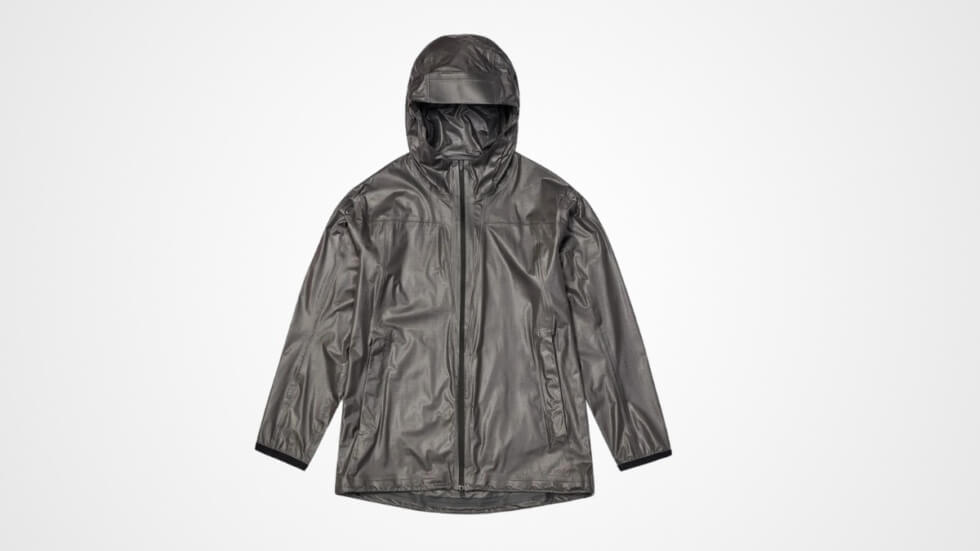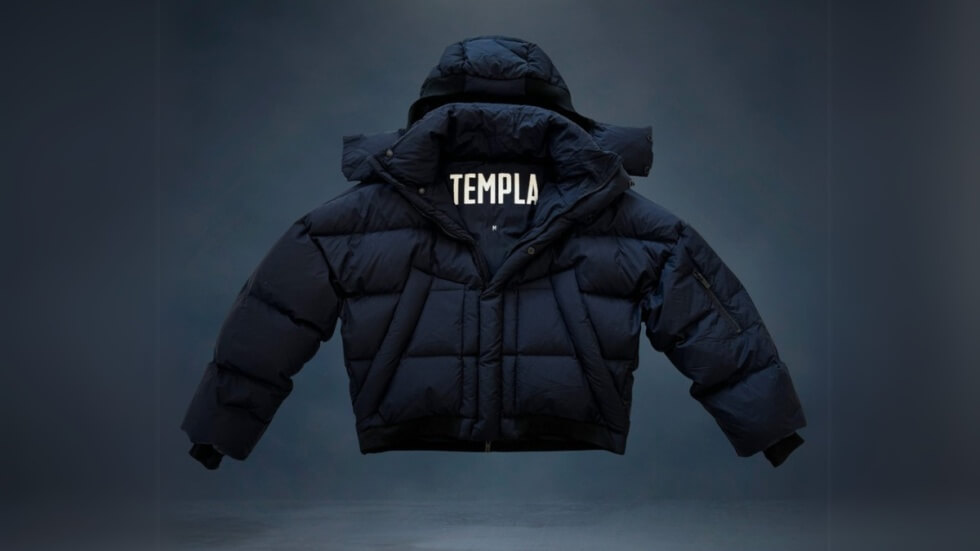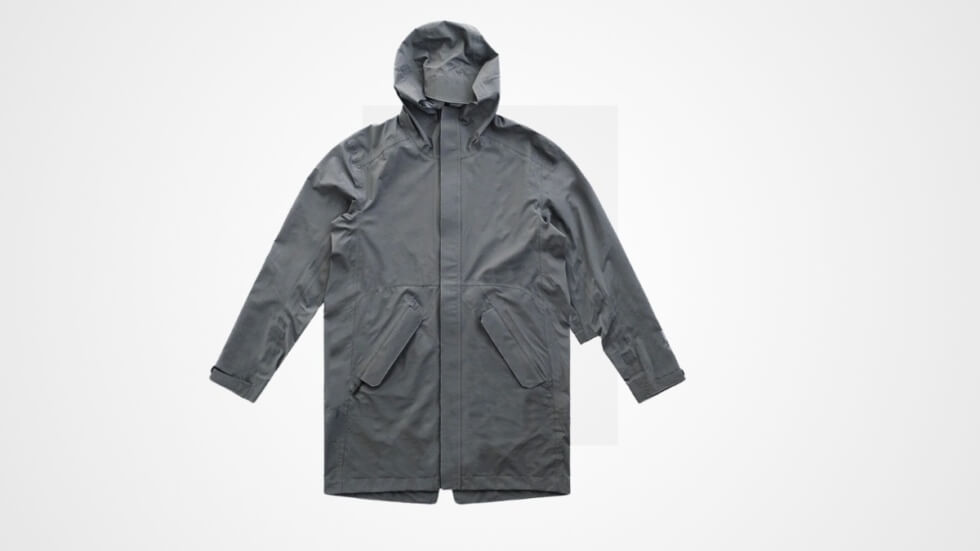It may come as a surprise to hear that some things are better bought vintage. Decades-old underwear and socks? Not so fast. Jeans, on the other hand, are just what you need: the right mix of new and old, traditional and trend-setting, timeless and of the times.
As you probably know, there’s one Bay Area-born brand that’s been making them since 1873: Levi’s. (Yes, jeans turn 150 in 2023.) Its foremost style, the 501, was created in 1890, when the company first assigned numerical values to its first overalls (aka jeans). No one knows the exact reason behind the numbers though, because a fire and an earthquake at the company’s San Francisco factory wiped away a sizable chunk of its history. But, the style has built quite a legacy since.
A half-century later, the onset of WW2 meant Levi’s would have to adhere to new manufacturing regulations set in place to accommodate a raw material shortage — one caused by a sudden demand for more metal and cotton. The war changed Levi’s forever. It emerged at its conclusion streamlined — even more so than before — without many of the workwear features wearers deemed synonymous with Levi’s jeans. With a lighter profile, Levi’s looked East to New York and Connecticut. Their one-way flight to fashion fame took off.
In the following decades, Levi’s eyed expansion with righteous suburban folks, creating ad campaigns targeted toward families looking for outfits for their “schoolboys.” (See: its ad from an August 25th, 1957 edition of The Sunday News). But Hollywood had other ideas: Costume designers for a few of the era’s biggest films put big-screen bad boys like Marlon Brando, James Dean and even Elvis in Levi’s. Then, by the time the ‘60s arrived, free spirits made fashion fluid and the jean assumed many forms (aka washes, fades and fits).
So, what’s up with old jeans and why the hell do people spend big money on vintage jeans? Levi’s jeans have lived a hell of a life. There’s history in these indigo-colored coveralls — no matter how much of that dye there is left. They’ve served industrial workers, revolutionaries and rock’n’rollers. Levi jeans are American fashion’s most successful missionary. With Levi’s, as it is with most winemakers, you’ll find finer flavors the further you explore the cellar — or, in this case, the history.
History of Levi’s
Bavarian immigrant Levi Strauss founded the West Coast wing of his brother’s dry goods business in San Francisco in 1853. 20 years later a tailor, Jacob Davis, reached out to Strauss about rivets he fastened to pants to reinforce their pockets. Together, Davis thought, they could file the aforementioned patent for rivet reinforced waist overalls. And, in 1873, jeans as we know them were born.
But not really. These kinds of trousers already existed. Levi’s just popularized (and patented) ones with rivets. The reinforcements were originally for workers, who would inevitably work (pun intended) their way through usual pants, creating a market for more durable ones. (Hence the logo, a visual of two horses tied to the pants trying to rip them apart.) By 1890, the patent expired and Levi’s was no longer the style’s exclusive manufacturer. Cue numerical values: first being the 501 (and the 201, an affordable alternative). Though the reasoning for the numbering remains a mystery, Levi’s used it as the foundation for styles to come: the 505, 511 and so on and so forth.
A Glossary of Key Terms/Concepts:
Denim: The fabric used to make jeans, this strong cotton twill is dyed with indigo which gives it a distinctive blue shade. In recent years, this all-cotton fabric is woven with a small percentage of stretch material for comfort. Vintage Levi’s are made from 100-percent cotton.
5-pocket: The foundational design of all blue jeans designed by Levi’s. The 5-pocket design is simple: two front internal pockets, one right-hand coin pocket — originally a “watch pocket” — and two back patch pockets.
Rivets: This is another foundational feature of all Levi’s, copper rivets are placed at a handful of stress points on the jeans — including the back pockets until 1967.
Red Tab: The Red Tab is the small red tag on the back right pocket. Learn more about Levi’s tab colors here.
Big E: Levi’s switched the text logo on their back red tabs from all caps to lowercase in 1971, meaning jeans made prior will have LEVI’S on them. Ones made after will look like this: Levi’s.
Orange Tab (1969-1999): Levi’s introduced a budget-friendly line of fashion jeans — they were less expensive and less burly than worker jeans — that had an orange tab instead of a red one.
Cone Mills: Cone Mills White Oak opened in 1895 and supplied Levi’s with selvedge denim starting in 1913. The North Carolina operation stayed in business in 2017, when it closed due to a lack of orders.
LVC: Once called Capital E, Levi’s Vintage Clothing (LVC) is Levi’s in-house reproductions label. Don’t be fooled by the jeans you just picked up; if they say vintage anywhere on them then they aren’t vintage.
Levi’s Authorized Vintage: Levi’s launched its own certified vintage line in 2017. There they sold authenticated old pairs.
Levi’s SecondHand: Levi’s SecondHand replaced Levi’s Authorized Vintage in 2021. It’s a more robust retail operation with a large supply of, as the name implies, secondhand Levi’s. You can sort by Vintage, Made in USA, ’90s and 2000’s.
Made in USA: Levi’s closed its final US factory in 2002. Everything’s been made overseas since.
Redline: Redline Levi’s are pre-1986 Cone Mills Denim jeans with red stitching on the outseam.
Care Tags: Care tags were introduced right around 1970. They were required by US law to offer washing instructions and details about sizing and manufacturing.
About Vintage Levi’s Jeans, and Why Post-WW2 Is the Way to Go
A few important — albeit vital — developments occurred between the turn of the century and 1960: Levi’s starts sourcing its denim from the Cone Mills in Greensboro, North Carolina; Levi’s adds belt loops to the pants; Cone Mills makes selvedge red line denim exclusively for the 501s; Levi’s introduces the Red Tab (aka the logo tag on the right back pocket); Levi’s trademarks the Arcuate pocket stitch design; Levi’s starts calling its overalls jeans; and Levi’s introduces zippered jeans to east coast audiences.
All of these are important; they were baby steps on the company’s journey to defining American fashion. (I said it: Levi’s defined American fashion.) But it’s 1971 I am using as a starting point for this journey — my recounting of Levi’s history. It’s when Levi’s changed the Red Tab’s text on the back right pocket from LEVI’S to Levi’s, inventing the divide between “Big E” and “Little E” jeans. A few years prior, in 1967, citing complaints that the rivets wore through the fabric Levi’s placed over them and scratched whatever surfaces the wearer sat on, Levi’s removed the back pocket rivets in favor of bar tacks. Cue, in my opinion, the beginning of the modern era. (It officially begins when stretch arrives, FYI — when comfort takes precedence over durability.) You’ll know a pair predates 1967 if they have rivets on the back pockets,1971 if they have a “Big E” on the butt, 1986 if they’re Red Line selvedge (signaled by red lines on the inside leg seam) and 1999 if they’re Orange Tab.
But, if you go back any further, you must know that you’re nearly buying an antique – a covetable treasure like a clunky classic car or fine, fragile art (though few jeans you’ll find at fleas or thrift stores are over 100-years-old; those are tucked away in museums). Sure, someone could wear a pair of super-old Levi’s jeans, but that does not mean they should; unless they’re totally at peace with knowing a pretty chunk of change disappears if they rip or stain. Old Levi’s are auction-level acquisitions — translation: they are expensive — and, as such, I’m urging you to look for pairs that don’t pre-date 1967.
What’s the Difference Between Vintage and New Levi’s
Why buy vintage at all? Well, sustainable and stretch denim aside, jeans haven’t changed much since their debut. So, go back in time and grab a pair from the late ‘60s onward, and revel in the glory of fashion’s original journeyman: Levi’s blue jeans.
The primary difference between vintage and new pairs is the quality of the denim — noticeable in the weight, thickness and shape. Sure, vintage pairs have probably been broken in quite a bit, but they should feel more significant than new jeans. Brand-new they probably felt more like your Carhartts: crispy, tightly-woven and tough to break in.
Levi’s stopped making jeans in the US in 2003, but the decline started at least a decade prior, when Levi’s began reproducing its vintage pairs under the Levi’s Vintage Clothing line, in part, I believe, to capitalize on interest in vintage Levi’s and counteract quality issues — switching to inferior materials, struggling to control mass manufacturing — with its current catalog. (Don’t be fooled by Big E pairs from the late ‘90s. They’re nice, but they aren’t really vintage.) So, stick to jeans made between 1967 (my aforementioned marker) and 1992 (when Levi’s launched its first round of Big E reproductions). There are plenty of markers in this window which can help you pinpoint them to a particular calendar year.
But know you’re not the only one looking: Emma Grant, Head of Consumer Selling at eBay, told Vogue she’s witnessed a 268-percent surge in searches for “vintage denim jeans.”
How Vintage Levi’s Have Impacted the Industry
Levi’s is the foundation for denim around the world. As such, everything that’s come after the original 501 is influenced by Levi’s: that includes other gigantic brands, Japanese repro brands and plenty of US-based denim startups.
The many iterations of Levi’s jeans have spawned different inspired offshoots, too: Japanese denim modeling itself after Cone Mills’ Levi’s-exclusive denim; some makers mimicking the fit of 501s from a certain decade; other makers paying homage to particular faults found on vintage pairs; and beyond. There are tiny parts of Levi’s lore that inspired entire lines; like how the Cone Mills’ wooden floors are etched into the weft of every pair they made (because the floors let the machines spring up and down during production) or how the legs of jeans twist a certain way. It’s these uniquities that make vintage Levi’s so covetable; and the reproductions that reference these tiny ticks so exciting.
The more you learn about Levi’s jeans (and the mills that made their denim), the clearer the company’s influence becomes. Nerd out. It’s OK.
The Vintage Levi’s Landscape: Which to Buy, Basic Pricing Info, Sizing Tips
You’d be here forever if I listed off every pair of vintage Levi’s you could potentially buy. Simply put: I’m being intentionally short. Stick to the 501 or 505. These are the most abundant and thus the least likely to be scammed on. If you feel you’re being price gouged, just walk away (or close the window). There will be another pair.
Now that you know which to buy, here’s what to look for, and how much you should spend. First, check the care tag. Care tags were added to Levi’s jeans — by law — in the ‘70s. They’ll be your north star; where you look before you check anything else. They’ll let you know whether they’re made-in-the-US, or whether they’re vintage at all. And if they’re really old; ones without them are ‘60s-era or earlier.
Second, know your measurements. Hold this data set dear to your heart, and heed it whenever you’re about to click buy (or shake on a price). Sizing has changed; jeans shrink and stretch; measurements will never lie. Knowing your own will ensure your jeans always fit — even when you can’t try them on.
Standard fare made-in-US Levi’s 501s (which were made before 2002) will run you between $40 and $120 dollars — same for 505s. But the beauty of vintage is in never knowing exactly what someone will want for what they’re selling. Sometimes it’s a steal and you’ll score on a pair. Other times they’ll overcharge, and you’ll settle for something pricier. Moral of the story is don’t pay more for vintage jeans than you would new ones. ($150 for new jeans won’t go as far as $150 for old ones.) Levi’s has also made it easy to shop its archive. With Levi’s SecondHand, you can cop vintage jeans for a fair price: no resellers’ uncharge, no shipping or processing fees and plenty of sizes to choose from. Plus, you can be notified when a pair in your size arrives.
“Don’t be afraid to buy damaged jeans,” says Levi’s Tailoring and Customization Designer, Jennifer Sharkey. “Denim holds up really well and is very good for repairs. It does beautifully under being repaired, tailored and reworn. Don’t be afraid to buy something that has some aesthetic damage — that usually just adds to the jeans. Knee holes, scuffed hems, torn pockets, anything that doesn’t impact the wearability will just add to the look.”
The Styles
501
The 501 is the original Levi’s silhouette. It is straight-legged, sits right at the waist and wears like jeans are supposed — without fuss and for a long while. These have a button fly, a feature adored by denim purists, and a medium rise.
Three Quick Ways to Date Your 501s
Check for a care tag. It’ll reveal quite a bit of info: where they were made and (unintentionally) when they were made. Care tags were added in the early ‘70s, just before Levi’s transitioned from Big E Red Tab logo to the Little E Red Tab logo in 1971. (Use this Levi’s guide to date your tab.) If you have a Big E, yours are older than that. Care labels were added this year, too, and they act as a good marker for jeans with a damaged or removed Red Tab. Selvedge 501s were made until 1984 (marked by a visible red selvedge finish on the outseam). If yours are not, they’re modern, meaning they were made between 1984 and 2002.
What You Should Be Ready (and Willing) to Spend
- $50-$100 for something you’ll love but also wear: Levi’s jeans made between 1967 and 1984.
- $100-$250 for something interesting, that you’ll maybe wear out: Levi’s jeans made before 1984, which includes customs or rare pairs (patched, painter or faded).
- $250+ for something collectable: rare ones or customs, or jeans from the mid-‘50s or early ‘60s.
- $50-$100 for something you’ll wear: 505s from the late ‘70s or early ‘80s.
- $100-$250 for something you’ll cherish: earlier 505s or Orange Tab, Levi’s budget-minded line, 505s. Orange Tabs aren’t as high quality but like defective chips, the rarity makes them worth something.
- $250+ for a collector’s item.
Always inquire about free returns — even if it’s only guaranteed because of issues with how they fit.
Phrases to Search
Redline Levi’s 501s, Made in USA 501s, Big E Levi’s 501s, ‘70s Levi’s 501 Jeans, ‘80s Levi’s 501 Jeans, Vintage 501s
505
505 jeans boast what collectors call a “regular fit,” compared to the 501’s “original fit.” They’re straight through the leg but a bit slimmer in the thigh. The rise differs a bit, too, as many report it feels higher. But there’s one component you can always count on: The 505 will always have a zipper fly.
Two Quick Ways to Date Your 505s
Since the 505 was introduced in 1967, in conjunction with pre-shrunk denim, there are Big E and Little E versions — as well as selvedge and non-selvedge, because they were made pre-1984. Use both goalposts as frames of reference. Then use this guide to date your caretag. If there isn’t one then you know your 505s were made between 1967 and 1970 (and they’re one of few; and worth a whole lot).
What You Should Be Ready (and Willing) to Spend
And always inquire about free returns — even if it’s only guaranteed because of issues with how they fit.
Phrases to Search
Vintage 505 Jeans, ‘70s Levi’s 505 Jeans, ‘80 Levi’s 505 Jean, Levi’s Orange Tab 505 Jeans, Made in USA 505 Jeans



